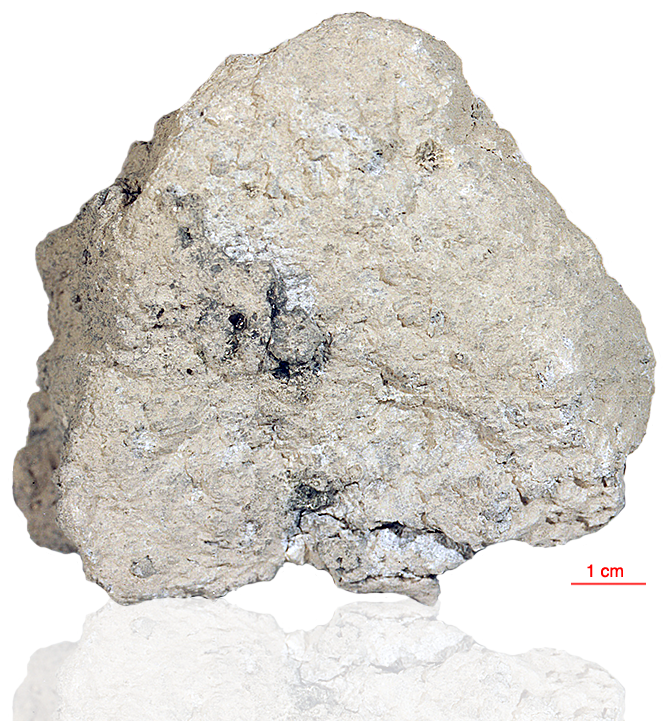
Fact sheet
67435 has been described as a dark-matrix breccia, although it is not all that dark. Clasts appear to be of the anorthosite-norite-troctolite (ANT) clan including two clasts containing pleonaste spinel (not present in our thin section). The fine-grained matrix is feldspathic, porous, friable and fractured. The matrix encloses numerous grey aphanitic clasts and rare white ANT clasts. The dark aphanitic clasts have a poikilitic texture indicating that they are impact melt breccias. Crystallite-rich glass dominates our thin section (rotation 2). In reflected light, sub-spherical globules of metallic iron are the most obvious feature.
The sample weighed 353 grams before analysis and fragments have been dated between 3.82±0.09 and 4.427 ±0.05 billion years (Ar/Ar).
Further details of this and other Apollo samples are here: http://curator.jsc.nasa.gov/lunar/
The Apollo 16 landing site was in the hilly region around Descartes crater in the lunar highlands. The landing spot was chosen to allow the astronauts to gather geologically older lunar material (Descartes Formation and the Cayley Formation) than the samples obtained in the first four landings, which were in or near lunar maria.
The mission lasted 11.1 days, with a stay on the lunar surface of 71 hours. The crew were on the lunar surface for 20.2 hours during which they traversed approximately 27 kilometers and collected approximately 96 kilograms of samples.
Apollo 16 was launched on 16 April 1972.






